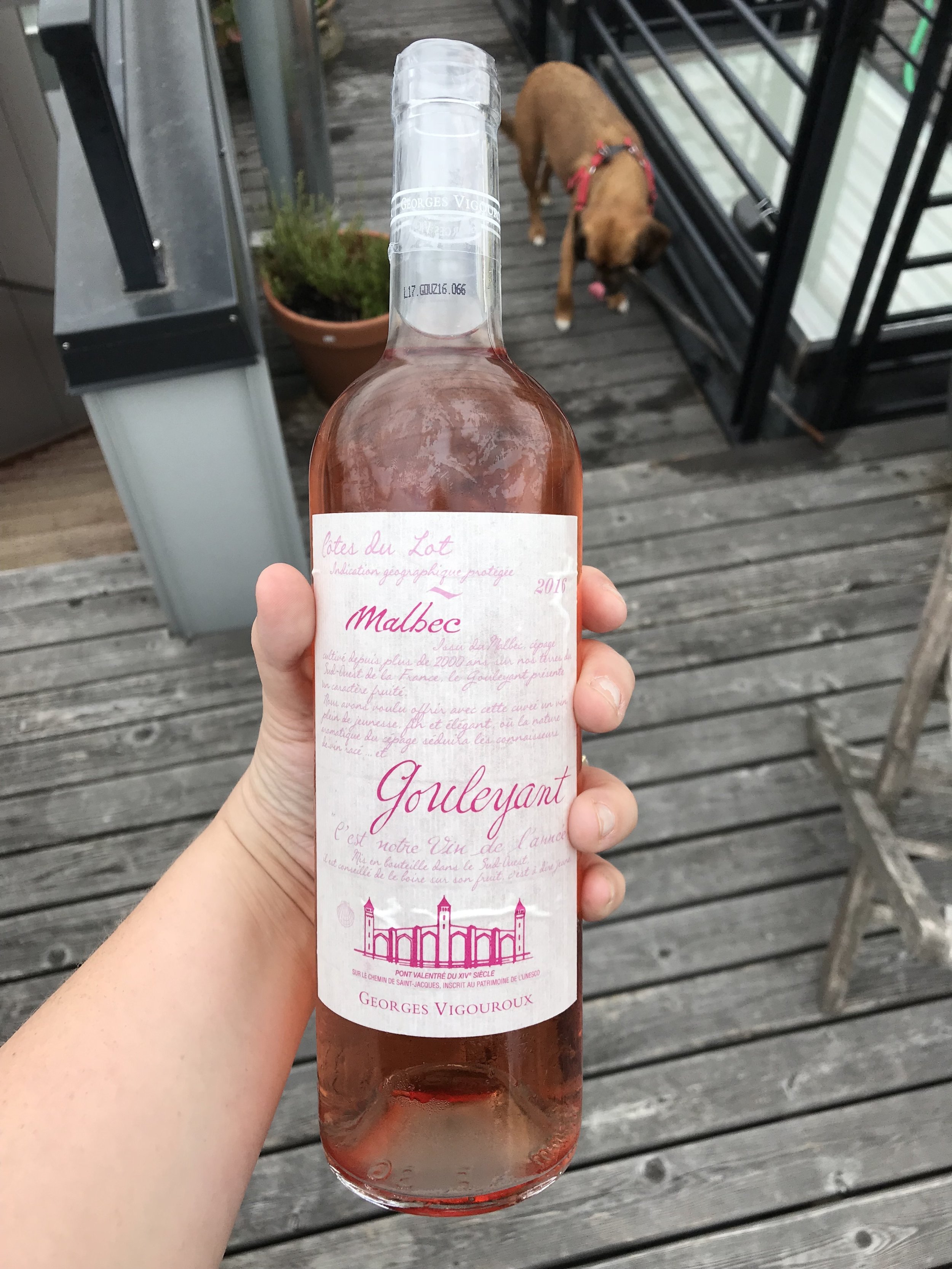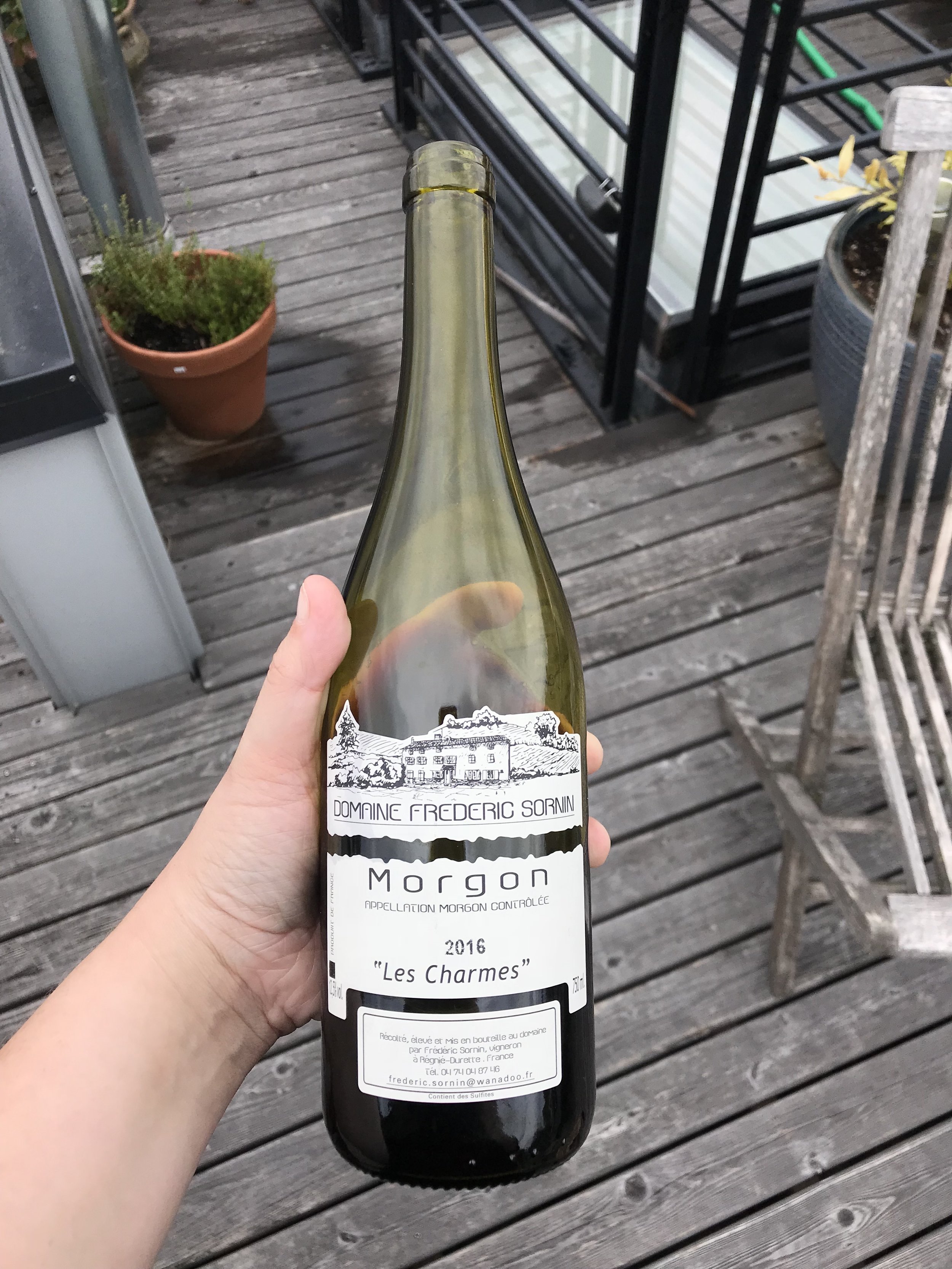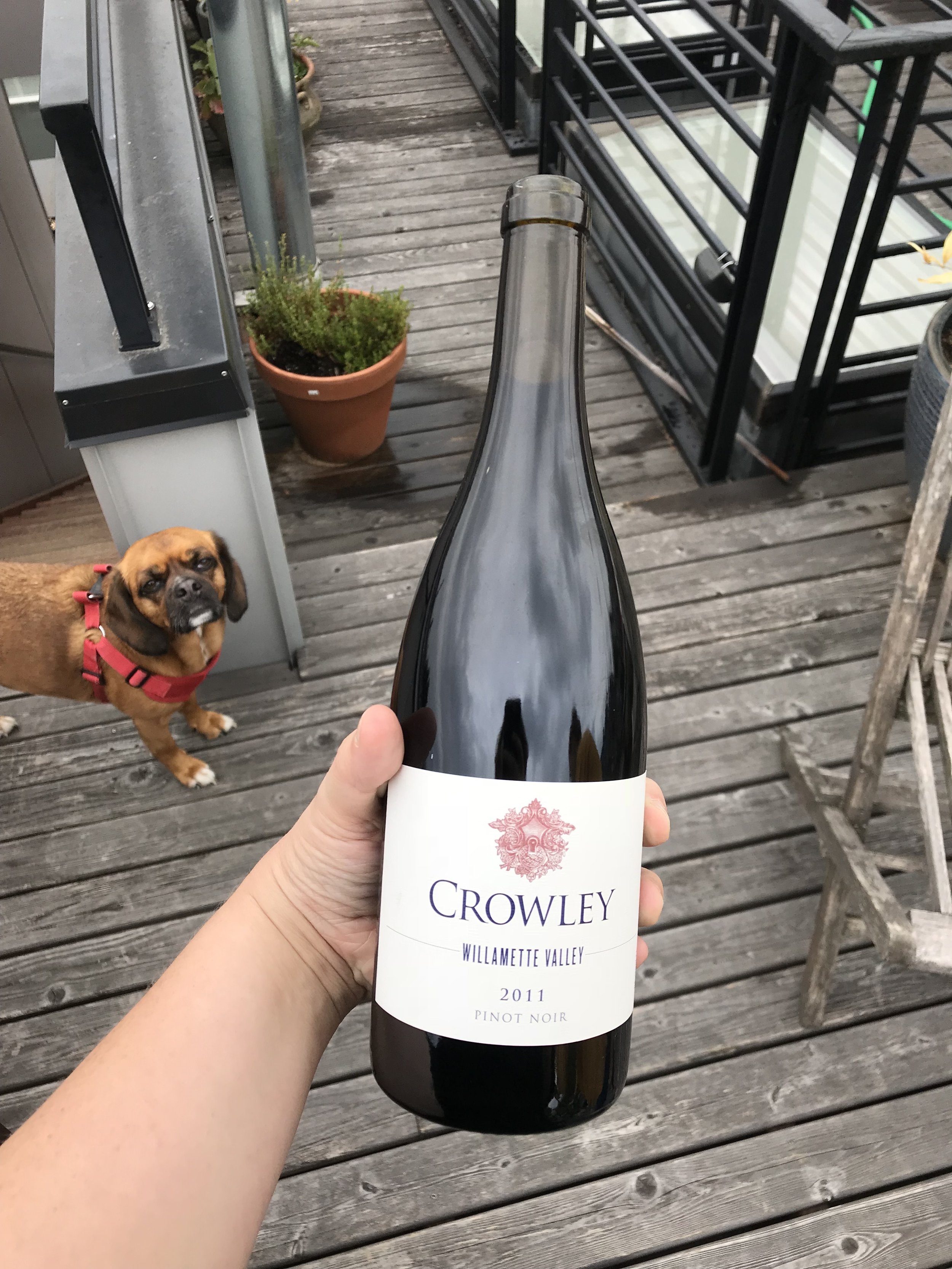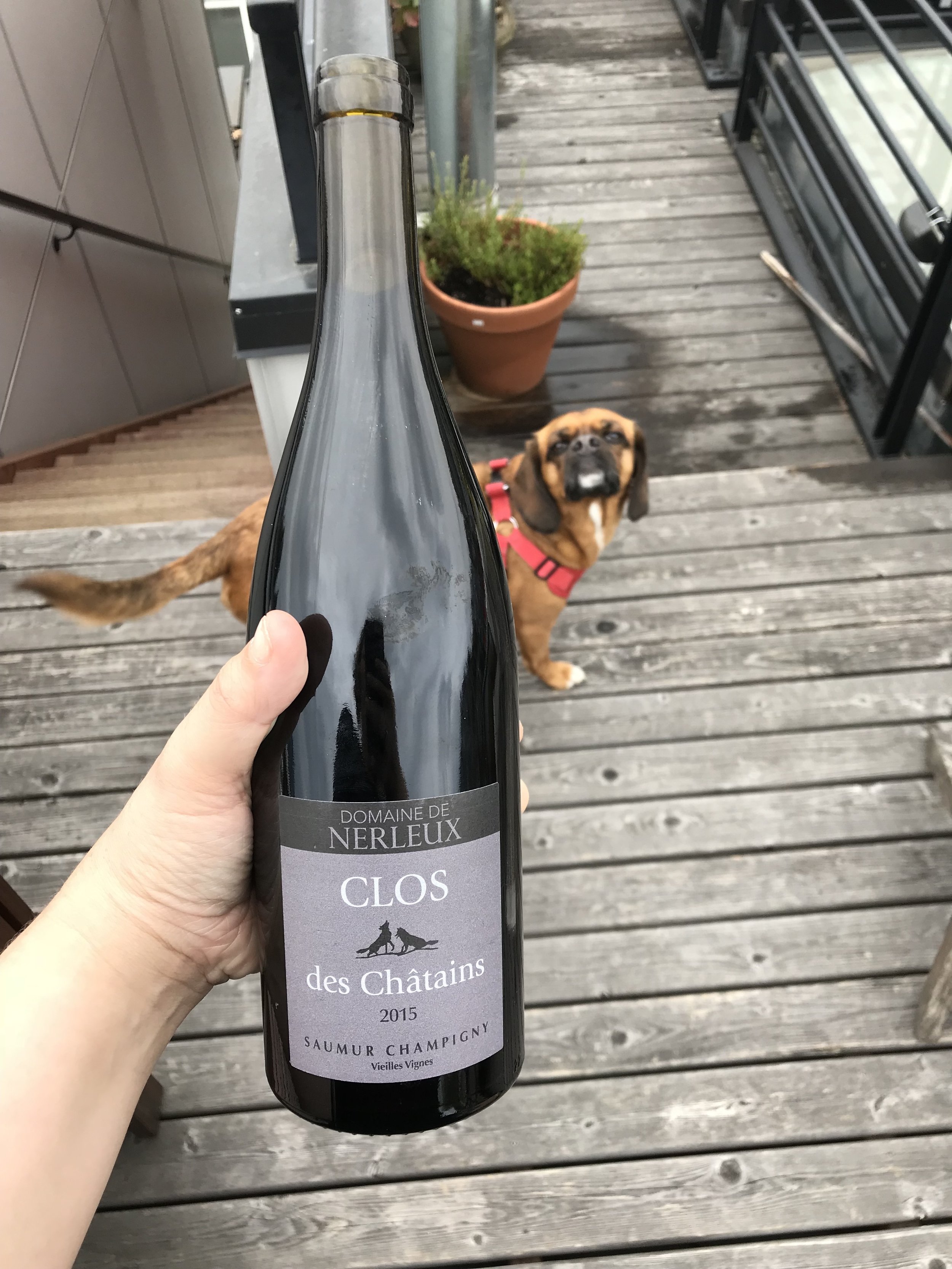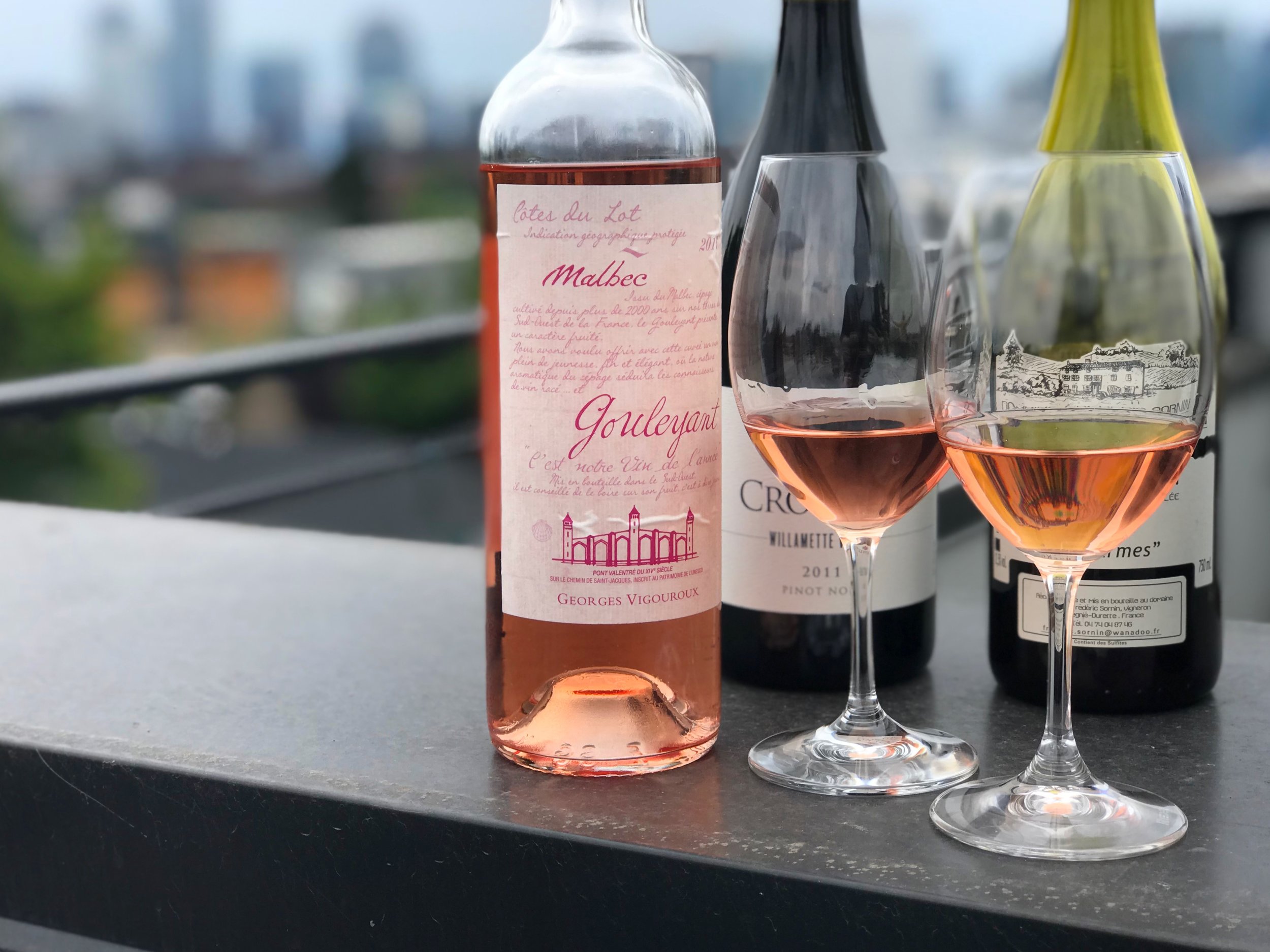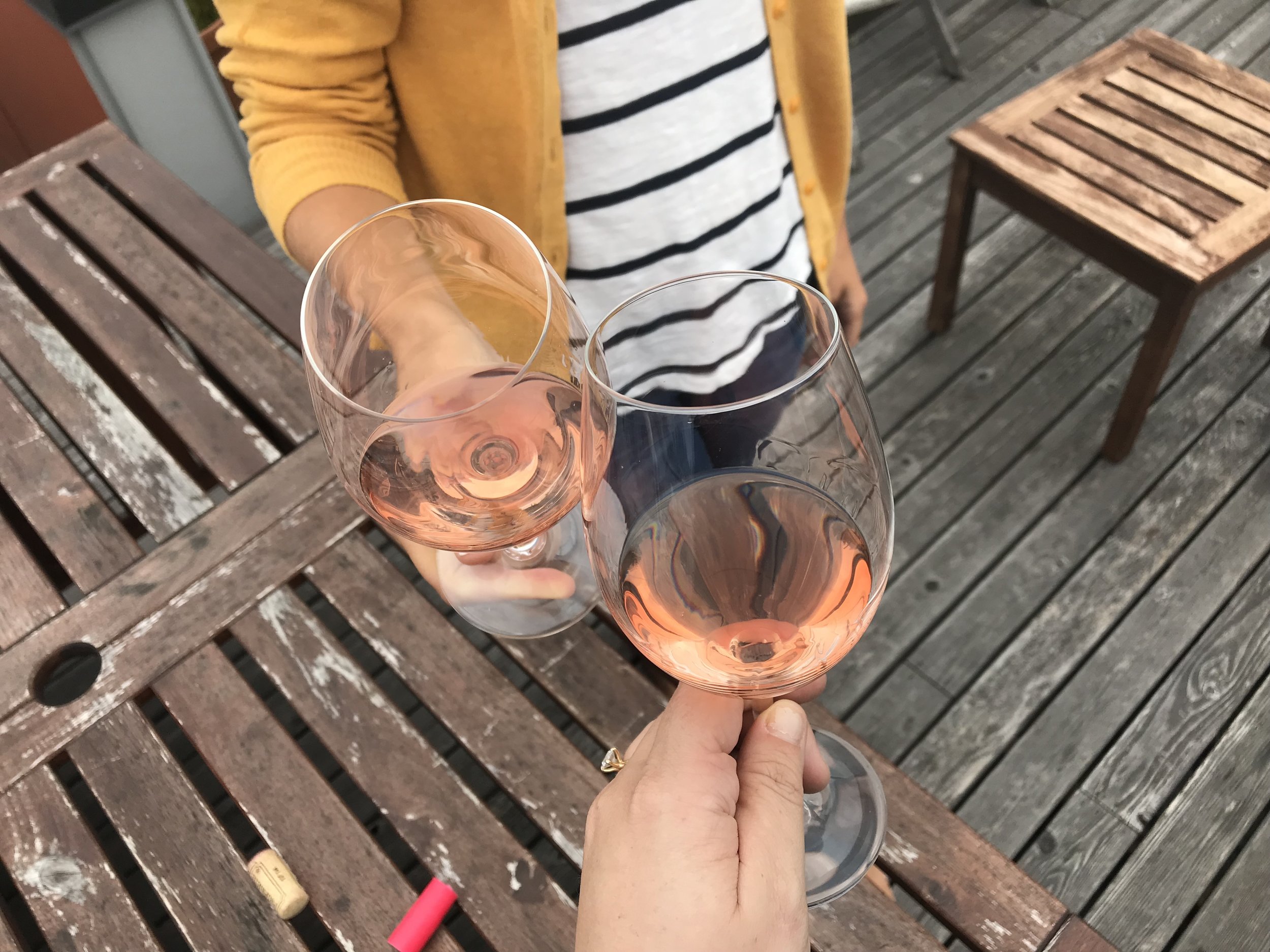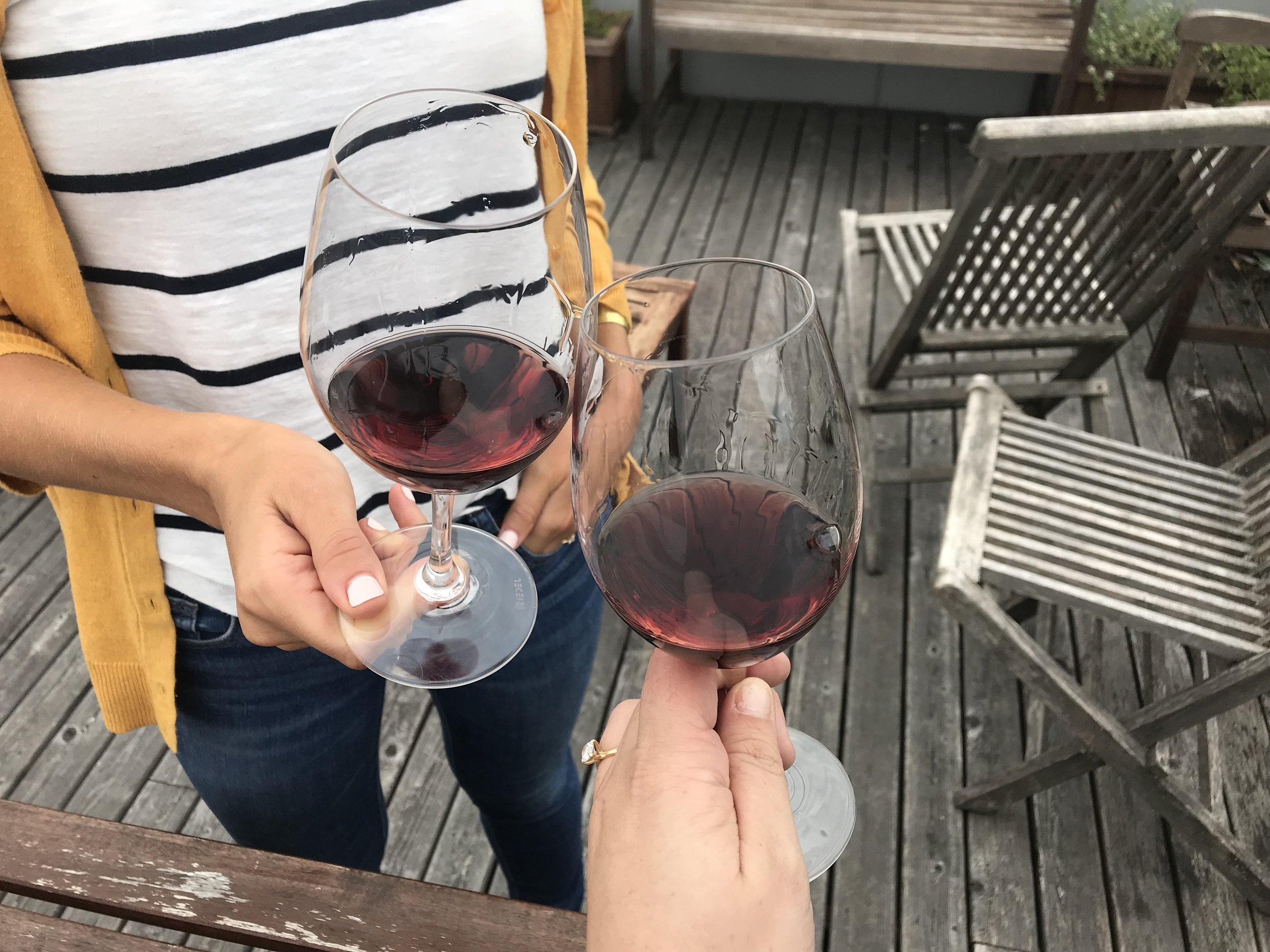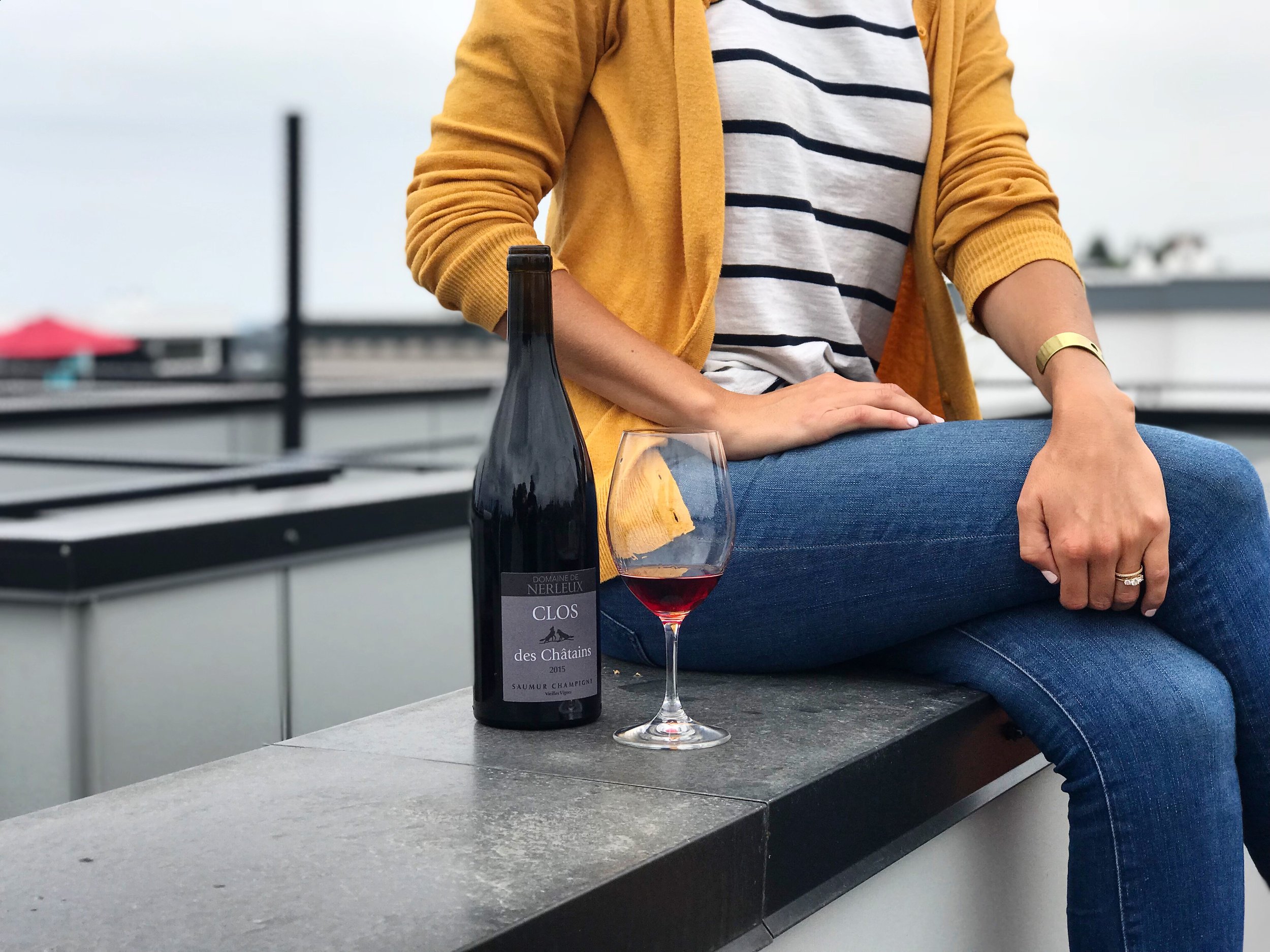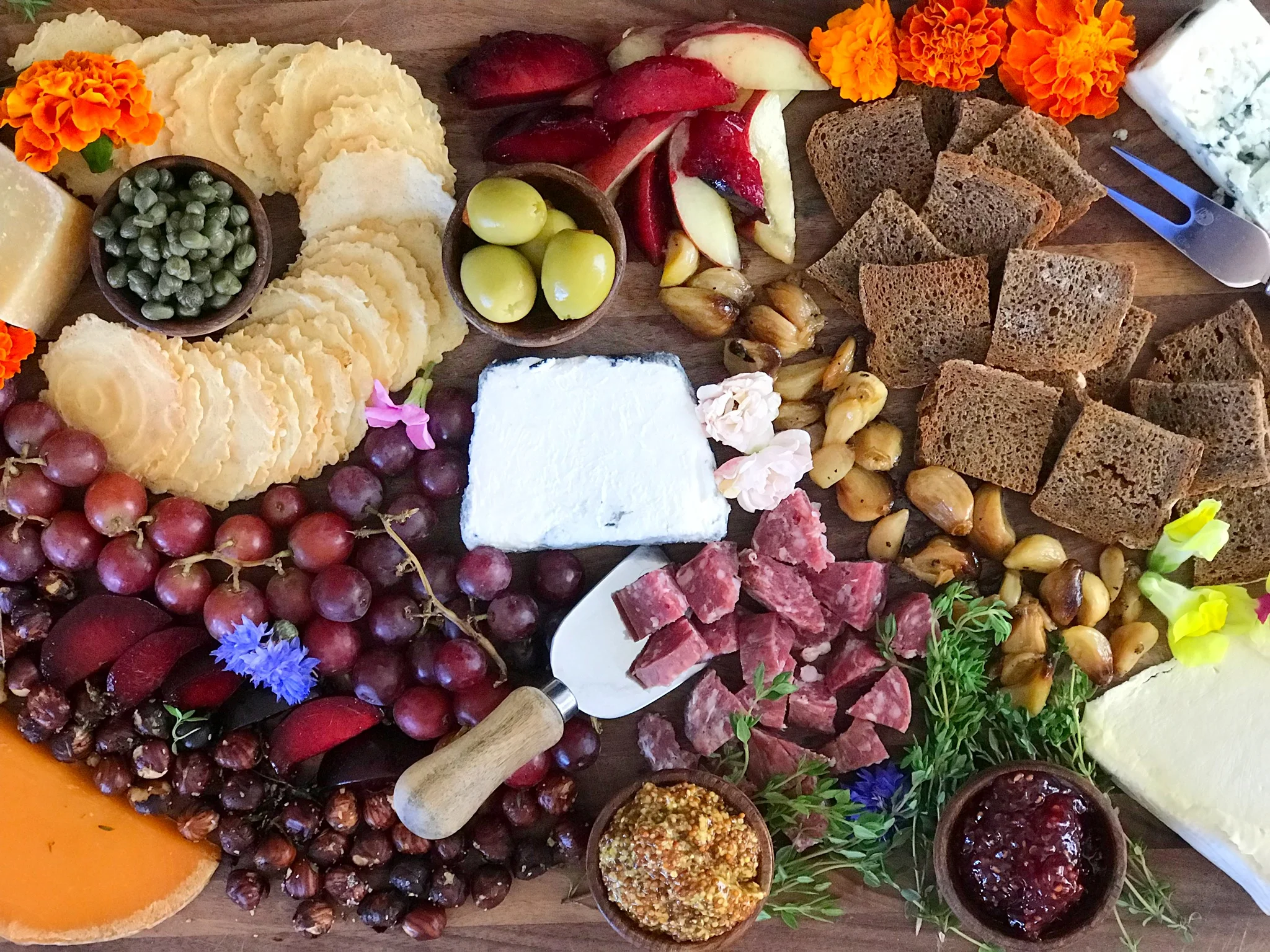Summer-Into-Fall Wines
Here’s the deal: It's almost fall. (Cue massive sobs from Karen and many others across the northern hemisphere.) Whether we like it or not, the days are getting shorter, the nights are getting cooler, and we can finally turn on our stoves again. Though saying goodbye to 14 hours of sunshine a day is rough, these few weeks where summer and fall mix together are actually some of my favorite days of the year. It's something about the bright blue skies, crisp air, and orange-tinged trees that excites me. If you think I'm totally nuts and you dread the onset of autumn, take solace in this: It's finally red wine season.
Here are four wines to help you feel better about saying goodbye to sweet, sweet summer.
+ A few background shots of my dog.
2016 Domaine Georges Vigouroux Gouleyant Rosé
Who makes this wine?
Domaine George Vigouroux. This is a century old winery in Cahors run by a family that has been pioneering Malbec in the south of France for four generations.
Grapes?
Malbec.
Where does it come from?
Cahors, France. This is a region in the south of France—east of Bordeaux and north of Toulouse—that is famous for Malbec.
What’s cool about this wine?
This bottling is 100% Malbec from some of the highest elevation vineyards along the Lot river, a 481-kilometer body of water that runs east to west through south-central France. The vineyards owned by Vigouroux grow atop the gravel and clay terraces perched high above the water—and slowly soak up the mineral influence throughout the year.
Why this rosé? I usually drink things that are lighter pink.
I adore this rosé for fall because it carries a little more heft than the pale, peachy Provençal you’ve been drinking all summer. Malbec is a beefier grape; Cahors is a region that makes beefier wines. This is a dry, relatively light wine that can stand up to the cozy fall foods we start to devour this time of year.
Speaking of food—what should I pair this with?
Drink this bottle with the first roast chicken of the season. Or maybe the last grilled ribs of summer. Or a meatball banh mi from the Vietnamese pool hall next door to your house. Rosé is an excellent pairing for so many foods because it lends needed acidity to things like delicious crisp chicken skin and fatty, succulent pork meatballs.
2016 Domaine Frederic Sornin "Les Charmes" Morgon
Who makes this wine?
Domaine Frederic Sornin, a 9th generation winemaker who took over his family's estate in 1978.
Grapes?
Gamay.
Where does it come from?
Beaujolais, France. This particular bottle is from Morgon, a cru (read: region) of Beaujolais. There are 10 crus of Beaujolais—each with its own distinct style. Morgon’s granite soils provide concentration, structure, and ageability to floral, spicy, fruited Beaujolais.
What’s cool about this wine?
The estate itself is incredibly interesting—nine generations of Sornins have farmed this land. I can't even name the people three generations back in my family—I love the old ways of the French. And despite the long tradition, this Domaine isn't afraid of change. In 2006, almost 30 years after Frederic took over, he shifted his entire estate into certified organic farming. He now farms 35 organic acres full of 50–60 year-old vines.
Why this Beaujolais?
Taste-wise, it's a very light, lifted Morgon, which feels delightfully appropriate for these final summer nights.
Okay, let's talk food.
To me, Beaujolais is brasserie wine. I’m talking burgers, steak frites, and tartare. This wine is light bodied and juicy with acidity, just what I want after a big beefy bite. My other favorite Morgon pairing is Chinese food—especially dumplings. Very specifically, the lamb jiaozi at Lionhead in Seattle.
2011 Crowley Willamette Valley Pinot Noir
Who makes this wine?
Crowley. This is Tyson Crowley’s namesake winery from the Willamette Valley. Before setting up his own shop in 2007, he worked for some of the Wilamette greats: Erath, Brick House, Archery Summit, and Cameron. His wines are classy and polished for an unbelievably low price.
Grapes?
Pinot Noir.
Where does it come from?
The Willamette Valley. Just 3.5 hours south of Seattle, the Willamette Valley is a haven for New World Pinot Noir. The history of why Pinot is heavily planted throughout this part of Oregon is fascinating—and it all stems back to David Lett of Eyrie Vineyards, who first planted Pinot grapes in the valley in the 1960s. The Willamette Valley and Burgundy sit at the same latitude of 45 degrees north and see a similar amount of heat throughout the growing season. Pinot in Oregon makes total sense now, but at the time, it was downright revolutionary.
What’s cool about this wine?
This wine reminds me of one of my favorite quotes from George Elliot, “Delicious autumn! My very soul is wedded to it, and if I were a bird I would fly about the earth seeking the successive autumns.” To me, this wine is just about the closest thing you can find to never-ending fall. It oozes autumnal charm.
2011! That's dang old.
Yep! Not too old by any means, but it's the right amount of age to start showing off cool tertiary notes (notes that come out with age) on the nose and palate. The Willamette Valley shows off this unbelievably interesting mushroom note on the nose after half a decade in bottle—it's so quintessentially fall to me. It smells like a crisp day spent foraging for mushrooms in a vibrant green forest.
I also wanted to showcase this wine as a PSA: Don't hoard your wines! There's this rumor that you are somehow bad or not doing wine right if you drink wine too early. It's not true. So many wines don't need any aging at all, or less than you may think. This 2011 was singing when we opened it, it was so beautiful. And yes, it probably would have been good in another two years—maybe still great after another four—but it was absolutely outstanding when we drank it. Why risk this beautiful wine right now for the off-chance that it could be marginally better in another few years? My boss said this to me once and I've made it my mantra: Drink the good shit now.
Okay, okay, I'll drink my old Pinot! What should I eat with it?
This would be dynamite while using up the rest of your summer squash in a buckwheat gallete. It would also be pretty killer with miso-glazed tofu and soba noodles. And without a doubt, it would be delicious with some sherry-glazed mushrooms.
2015 Domaine De Nerleux Clos des Chaintains Saumur Champigny
Who makes this wine?
Domaine De Nerleux, a family-run operation that dates back to 1870.
Grapes?
Cabernet Franc.
Where does it come from?
The Loire Valley in France. Domaine de Nerleux is in the village of St. Cyr-en-Bourg, which enjoys a microclimate of the lowest rainfall and the highest temperatures in the region. This bottle is sourced entirely from vieilles vignes (old vines) planted between 1933 and 1950 in the family’s monopole vineyard,* Clos des Châtains.
*A monopole vineyard is a vineyard owned by one family—which is very common in Washington, but more uncommon in many famous regions of France.
What’s cool about this wine?
The domaine is currently run by Amélie Neau, the ninth generation of vigneronne in her family and the first woman to ever run the winery. I love badass women in wine.
The region itself, Saumur-Champigny, is super interesting, too. It's the AOC directly surrounding the town of Saumur, which straddles the Loire River just west of Chinon (a possibly more well-known region for most beginning oenophiles). Saumur boasts a beautiful castle, the Château de Saumur, and the city spreads out on both sides of the river with Saumur-Champigny’s limestone and tuffeau vineyards extending further southeast. Like its eastern neighbors Bourgueil and Chinon, Saumur-Champigny make Cabernet Franc almost exclusively. While Bourgueil boasts the biggest tannins and Chinon is famed for its green, vegetal qualities, Saumur-Champigny shines with florals. It’s by far the lightest of the bunch; more reminiscent of terroir-expressive red Burgundy than anything else. It's also a STEAL for the price.
I don't know if I like Cabernet Franc?
That's totally your right—but I might suggest trying something from the Loire Valley if you've only had Bordeauxb or domestic Cabernet Franc? The Loire is a different beast—entirely its own stylistically. It's much lighter than many of the Cabernet Francs you would find in Washington state—more delicate and food friendly. I think if you like Pinot Noir, you will probably like Loire Cab Franc.
Food friendly, you say...
Decidedly so. It's bright acidity makes it perfect for just about anything. I love to pair it with grilled meats—especially as the last few weeks of grilling season are upon us. This grilled pork from Alison Roman would be superb.
Finally, where can I find these wines?
You can find all of these wines at my day job—Full Pull Wines. However, you can also explore these wines as categories. Head to your favorite local shop and tell them you're looking for something similar to a Saumur Cab Franc. Maybe they will have one to purchase—or maybe they will have something equally delicious to try. Either way is a win-win in my book. Looking for something in particular? Or a wine shop suggestion in your area? Leave a comment below!

